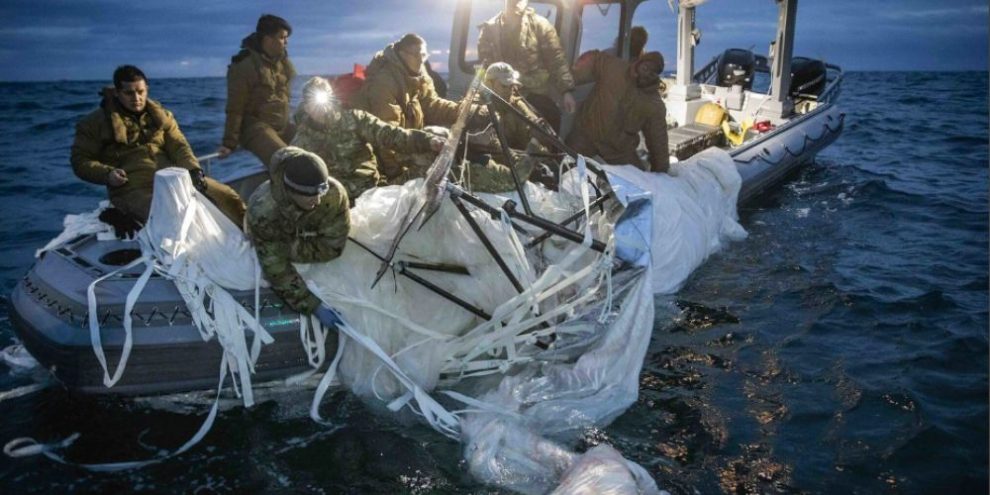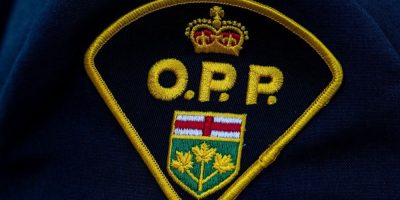
By James McCarten in Washington
A Canadian Coast Guard vessel churned across the Great Lakes to join the search for answers Monday after U.S. fighter jets shot down yet another mysterious object — the third such spectacle in as many days in the skies over North America.
The CCGS Griffon is also carrying RCMP investigators, as well as a drone team, to help locate debris that the White House confirmed is believed to be in the Canadian waters of Lake Huron, said Fisheries and Oceans Minister Joyce Murray.
Like the two preceding it, little is known about the object, which a senior Canadian military official confirmed was first detected over southern Alberta before moving over Wisconsin on Sunday, when an American missile took it down in U.S. airspace.
"We will do our very best to secure this material so that we can understand better what the purpose and the operations are about," said Murray. Two Coast Guard helicopters are also standing by to assist if necessary, she added.
At the same time, Canadian Armed Forces personnel and RCMP investigators are also in a remote stretch of central Yukon as they search for the remnants of the object that was downed in that part of the world Saturday, again by a U.S. fighter pilot.
The Royal Canadian Air Force has deployed a CC-130H Hercules, two CC-138 Twin Otters, a CH-148 Cyclone, and a CH-149 Cormorant aircraft to support efforts to recover the debris over what officials described as a 3,000-square-kilometre area.
"It is unfortunately very rugged and mountainous terrain," said Sean McGillis, executive director of federal policing strategic management at the RCMP, which is leading the two searches.
"The weather conditions are not great," he said during a technical briefing. "There's a very high level of snowpack in the region. So our efforts are going to be difficult, they will be challenging, they will take us some time."
McGillis later added that there was no guarantee that either of the searches, which include personnel experienced in dealing with explosives, biological and radiological hazards as a precaution, would be successful.
Exactly what was shot down over Yukon and Lake Huron remains unclear, though when asked if the object shot down over Yukon was a balloon, Maj.-Gen. Paul Prevost of the strategic joint staff said: "I think the best word I can use here is 'suspected.'"
"It's clearly objects that are lighter in the air," he added. "We cannot see any propulsion system at this time. … They might be balloons. Finding these objects will help us find a bit more on what they are and how they move around."
Defence Minister Anita Anand previously said the object shot down over Yukon was "potentially similar" to a suspected Chinese spy balloon downed off the coast of South Carolina on Feb. 4.
The object brought down over Lake Huron was the third shot down over North American airspace in as many days.
The first came Friday over the frozen waters of the Arctic Ocean, north of the Alaska coast and just 160 kilometres from the Canada-U.S. border. The second was downed Saturday over Yukon, with both Biden and Prime Minister Justin Trudeau consulting on the plan of action.
Norad commander U.S. Gen. Glen VanHerck confirmed in a briefing that part of the escalation for all of the sudden sightings is that Norad — a system originally designed to spot foreign aircraft and missiles — has recalibrated to better detect smaller, slower-moving objects
"If you have radars on all the time that were looking at anything from zero speed up to, say, (160 kilometres per hour), you would see a lot more information," VanHerck said.
"So, with some adjustments we've been able to get a better a categorization of radar tracks now. And that's why I think you're seeing these overall."
At the same time, the smaller and slower an object is, the harder it is to get a bead on, said John Kirby, the White House co-ordinator of the National Security Council.
"Slow-moving objects at high altitude with a small radar cross-section are difficult to detect on radar," he told the White House briefing.
The U.S. is convinced the original balloon was a Chinese surveillance device, but they know far less about the other three devices and their provenance, Kirby said. Academic, scientific or corporate research by privately owned or state-owned equipment remains a possibility.
"That said, because we have not yet been able to definitively assess what these most recent objects are, we acted out of an abundance of caution to protect our security, our interests and flight safety."
Trudeau, who happened to be in Yukon on Monday for a previously scheduled visit, waved off the suggestion that Norad should have detected all four of the incursions more quickly than it actually did, even after the recalibration.
"Actually, we are ensuring that we're monitoring together the airspace … we're working very, very closely together," Trudeau said, describing Norad as one of the only jointly commanded territorial defence systems in the world.
But he also acknowledged that the ongoing effort to upgrade and modernize Norad, a system that political and military leaders in both countries acknowledge is badly outdated, will be a top priority when he meets with Biden in person next month in Canada.
"This is a very serious situation that we are taking incredibly seriously," Trudeau said. "The importance of defending our territorial integrity, our sovereignty, has rarely been as important as it is now."
That didn't stop White House press secretary Karine Jean-Pierre from opening Monday's briefing with a public statement confronting the notion that the origins of the objects could be even further afield than first believed.
"There is no — again — no indication of aliens or extra-terrestrial activity with these recent takedowns," she said from the podium.
"It was important for us to say that from here, because we've been hearing a lot about it."
Banner image: In this photo provided by the U.S. Navy, sailors assigned to Explosive Ordnance Disposal Group 2 recover a high-altitude surveillance balloon off the coast of Myrtle Beach, S.C., Feb. 5, 2023. THE CANADIAN PRESS/AP-U.S. Navy via AP
This report by The Canadian Press was first published Feb. 13, 2023.
— With files from Lee Berthiaume in Ottawa.





